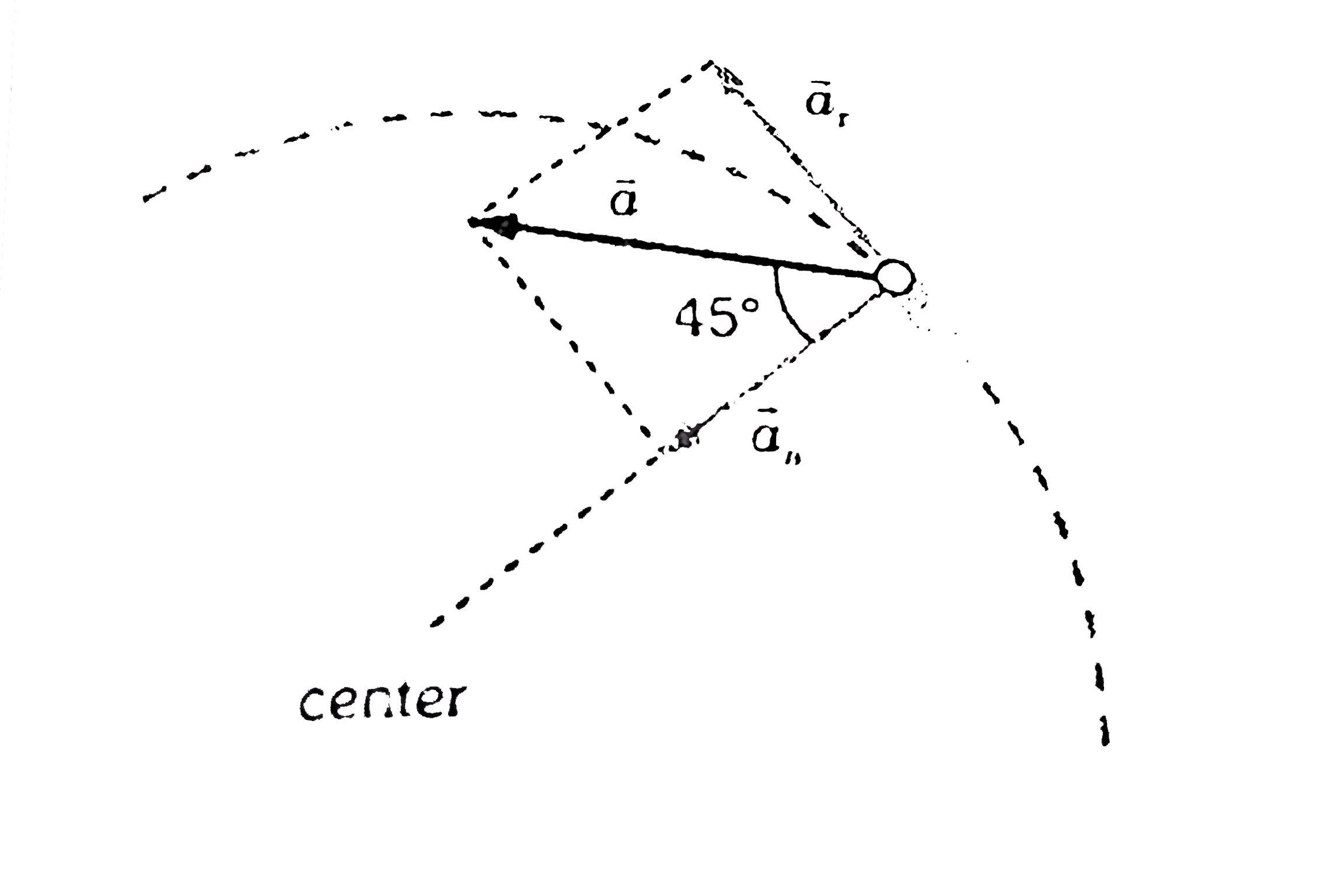Angle between the centripetal acceleration and radius vector is
90∘
180∘
0∘
45∘
The correct Answer is:B
To determine the angle between the centripetal acceleration and the radius vector in circular motion, we can follow these steps:
1. Understand the Definitions:
- Centripetal Acceleration (a_c): This is the acceleration that acts on an object moving in a circular path, directed towards the center of the circle. It is given by the formula:
ac=v2r
where v is the tangential speed and r is the radius of the circular path.
- Radius Vector (r): This is the vector that points from the center of the circle to the position of the particle moving in the circular path. It is directed away from the center.
2. Direction of the Vectors:
- The centripetal acceleration always points towards the center of the circular path.
- The radius vector points away from the center of the circular path.
3. Visualize the Vectors:
- If we draw a diagram, we can represent the radius vector →r pointing outward from the center of the circle and the centripetal acceleration →ac pointing inward towards the center.
4. Determine the Relationship:
- Since the centripetal acceleration points towards the center and the radius vector points away from the center, these two vectors are in opposite directions.
5. Calculate the Angle:
- The angle between two vectors that are in opposite directions is 180∘.
Conclusion:
The angle between the centripetal acceleration and the radius vector is 180∘.
---
- Centripetal Acceleration (a_c): This is the acceleration that acts on an object moving in a circular path, directed towards the center of the circle. It is given by the formula:
ac=v2r
where v is the tangential speed and r is the radius of the circular path.
- The centripetal acceleration always points towards the center of the circular path.
- The radius vector points away from the center of the circular path.
- If we draw a diagram, we can represent the radius vector →r pointing outward from the center of the circle and the centripetal acceleration →ac pointing inward towards the center.
- Since the centripetal acceleration points towards the center and the radius vector points away from the center, these two vectors are in opposite directions.
- The angle between two vectors that are in opposite directions is 180∘.
The angle between the centripetal acceleration and the radius vector is 180∘.
Topper's Solved these Questions
- BOOK - RESNICK AND HALLIDAYCHAPTER - CIRCULAR MOTIONEXERCISE - PRACTICE QUESTIONS(MORE THAN ONE CORRECT CHOICE TYPE)6videos
CIRCULAR MOTION
- BOOK - RESNICK AND HALLIDAYCHAPTER - CIRCULAR MOTIONEXERCISE - PRACTICE QUESTIONS(LINKED COMPREHENSION)2videos
CIRCULAR MOTION
- BOOK - RESNICK AND HALLIDAYCHAPTER - CIRCULAR MOTIONEXERCISE - PROBLEMS56videos
CIRCULAR MOTION
- BOOK - RESNICK AND HALLIDAYCHAPTER - CIRCUITSEXERCISE - Practice Questions (Integer Type)3videos
CIRCUITS
- BOOK - RESNICK AND HALLIDAYCHAPTER - CURRENT AND RESISTANCEEXERCISE - Practice Questions (Integer Type)3videos
CURRENT AND RESISTANCE
Similar Questions
Knowledge Check
- Question 1 - Select One
Centripetal acceleration is
Aa constant vectorBa constant scalarCa magnitude changing vectorDnot a constant vector - Question 2 - Select One
The centripetal acceleration is given by
Av2/rBv2rCvrDv/r - Question 3 - Select One
Angle between radius vector and centripetal acceleration is
A0cBπcC2πcDNone of these
Derive the relation between centripetal acceleration and linear velocity .
View SolutionA particle of performaing a U.C.M along a circle if radius r. The relation between its centripetal acceleration (a) and kinetic energy (E ) is given by
View SolutionThe term centripetal acceleration was proposed by
View SolutionA particle starts moving on circular path of radius 94m with tangential acceleration 3ms−2. Find angle between acceleration of the particle and radius vector at time t=1 sec.
View SolutionA particle is constrained to move in a circle with a 10 -meter radius. At one instant, the particle's speed is 10 m/s and is increasing at a rate of 10m/s2. The angle between the particle's velocity and acceleration vectors is
View Solution


